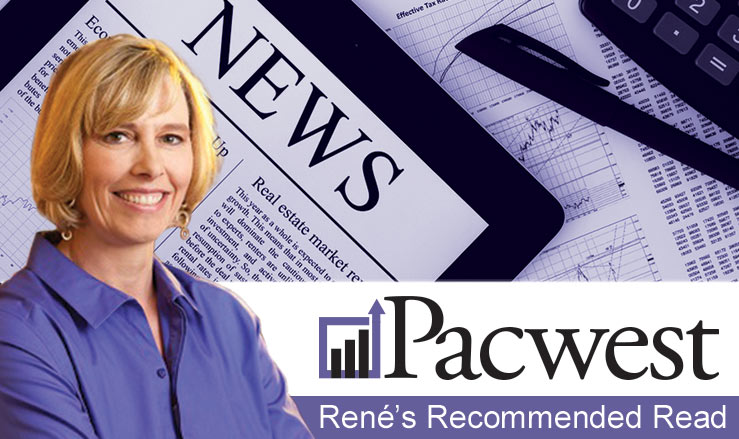
If you own commercial property, there’s nothing more important that improving the ROI. In this post, experts share how important income and expense analysis is to achieving a profitable investment.
What You Can Gain From an Income/Expense Analysis Program
IREM’s IncomeExpense Analysis program allows owners and property managers to have data at their fingertips that can serve as a benchmark against which to compare their own operating experience Vera McPherson and Nick Harris tell GlobeSt.com.
According to Vera McPherson and Nick Harris, IREM executives, quoted by Carrie Rosenfeld in globest.com, income and expense analyses programs allow “owners and property managers to have data at their fingertips that can serve as a benchmark against which to compare their own operating experience”.
McPherson goes on to say:
Owners and property managers are able to refer to geographic areas to form a comparison based on regional, national and special reports. These reports contain pertinent information broken down into categories such as size, age groups and operating costs.
The information is represented as “medians” and “ranges.” Median describes what may be called the “typical” expense for a given sample, and the range reflects the upper and lower limits within which the central portion of the sample falls.
Harris points out that the analyses let property owners and managers benchmark “both the positive and negative aspects of their own operations”. He adds that it “also allows you to play with variables for ranges of value, estimate of upside potential and measure of performance”.
Using The Data To Improve ROI
According to McPherson, improving property ROI is “the core mission”. Harris finds it very useful in his consulting business, especially for:
…showing industry standards where there is not good historical data for the property that is the subject of my consulting report
Harris adds:
After benchmarking, they can focus on what the property needs, pick out all the areas where their property is under-performing and then target each of those line items for scrutiny in the coming year to reduce the related expense or increase the related income.
Changes From Previous Years’ Analyses
In comparison to data from previous years, McPherson was struck by these observations:
…fundamentals across the overall office-building sector demonstrated improvement in 2016, led by downtown markets. Downtown office buildings saw a 10% increase in total collections and a 2.9% decrease in median net operating costs, while the suburban market remained relatively stagnant. Suburban-office total collections remained virtually unchanged at $19.76 per square foot, while median net operating costs dropped by 2.6%. Vacancy rates held steady in downtown markets (8%) and increased only 1% in suburban markets (5%). Taxes and janitorial/maintenance costs continued to be the largest expenses in both downtown and suburban markets.
Specific To Multifamily Properties
And multifamily owners will be happy to hear that:
The conventional-apartment sector continues to outperform most other property types. But within that sector, one type of conventional-apartment community outshines the others. If you guessed the property type with the lowest average vacancy, you would be wrong. According to IREM’s 2017 Income/Expense Analysis Reports, high-rise elevator properties lead the way nationally, with an average net operating income of $12.97 per square foot—a 25.9% increase over last year’s average. That is almost $5 per square foot better than the next best apartment type: low-rise buildings of 25 or more units. The NOIs per square foot for other conventional apartment properties were $7.99 for low-rise properties over 25 units, $7.61 for garden-style properties and $6.52 for low-rise building of 12-24 units.
And she added this somewhat counterintuitive observation:
High-rise buildings achieved higher NOI even though they had the highest average vacancy rate of any conventional-apartment property type at 6.6% of gross potential income. Even though low-rise properties of 12 to 24 units had the lowest average NOI, they also had the lowest vacancy at 4.3%. Garden-style properties averaged 5.9% vacancy, while low-rise building of 25 or more units had an average vacancy of 6.2%. While it seems counterintuitive, the property types with the highest vacancy rates also had the highest NOI.
The Backbone Of It All: Great Data
In closing, McPherson points out that it’s taken 62 years of effort to get where they are today, and that the underpinnings of everything is data.
After adding office building information in the 1970s, McPherson says the analysis now encompasses:
…data from nearly 11,000 properties. This information is annually produced in more than 1,000 pages of analysis in five specialized volumes.
There’s Nothing Like Data, Except Expertise
Surely the information from the performance of over 10,000 properties is wonderful, but what to you do with it? Really, you need expert help to interpret the data and decide on a course of action. That’s when it’s time to reach out to the professionals at Pacwest Commercial Real Estate. Whether you own or are looking at buying multifamily or office properties, put the experts in your corner by calling René Nelson at 541-912-6583 today!

Recent Comments